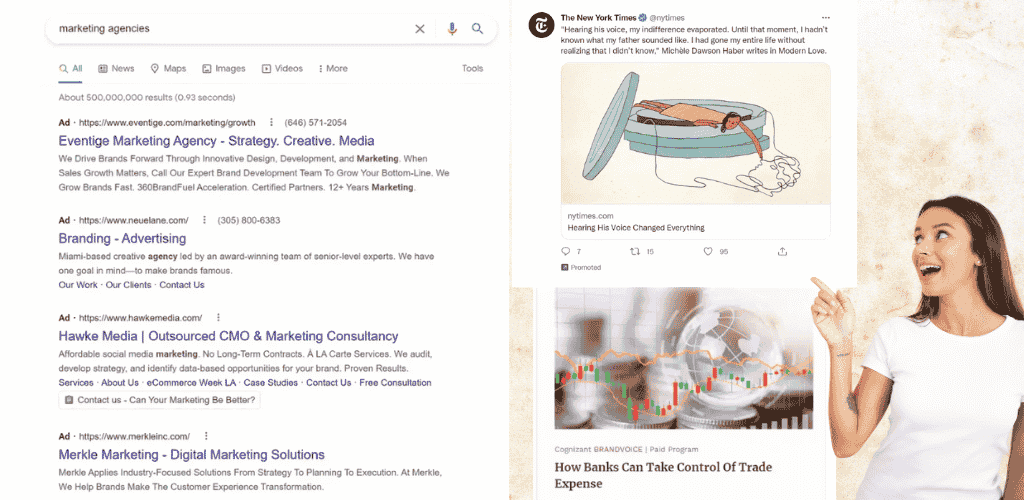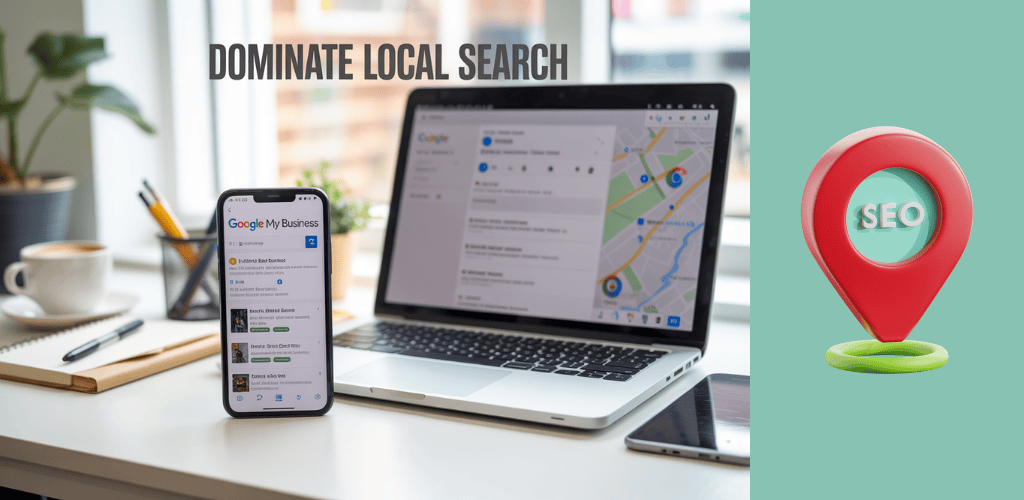Native advertising: the chameleon of the digital marketing world. You’ve probably encountered it without even realizing it. That article you read about sustainable living? The podcast episode discussing financial wellness? They might just be cleverly disguised advertisements.
But don’t worry, you’re not alone in your confusion. Native Advertising Example strategies have become so seamlessly integrated into our digital experiences that it’s challenging to spot the difference between genuine content and promotional material. So, how can you navigate this blurred line between content and commerce?
In this blog post, we’ll dive deep into the world of native advertising example tactics. You’ll discover effective strategies, explore successful examples, and learn to recognize these ads in the wild. We’ll uncover the key elements that make native ads tick and examine their impact on both consumers and brands. By the end, you’ll be equipped with the knowledge to not only identify Native Advertising Example approaches but also understand their power in the modern marketing landscape.
Table of Contents
Understanding Native Advertising Example
A. Definition and purpose
Native advertising is paid content that blends seamlessly with surrounding editorial material, making it more appealing and potentially lucrative than traditional ads. However, this similarity raises ethical concerns, particularly when it blurs the line between journalism and advertising. The Federal Trade Commission (FTC) emphasizes that misleading consumers about the commercial nature of content is deceptive, requiring clear labeling to maintain transparency.
B. Difference from content marketing
You should understand that Native Advertising Example campaigns differs from traditional content marketing in a crucial way. While advertisers have historically sponsored content without direct influence, native advertising involves advertisers creating and providing the content themselves.
This shift highlights a fundamental conflict between journalistic goals, which prioritize public interest, and advertising objectives, which serve commercial interests. Now that we’ve covered these distinctions, let’s explore the various types of Native Advertising Example formats in the next section.
Effective Native Advertising Strategies
Now that we’ve covered the basics of native advertising, let’s dive into effective strategies to make your campaigns stand out.
A. Seamless integration with host platform
To create successful native ads, you need to ensure they blend seamlessly with the platform’s content. This means tailoring your ad’s format, style, and tone to match the surrounding environment. By doing so, you’ll overcome ad blindness and engage users more effectively.
B. Engaging storytelling techniques
Compelling storytelling is key to capturing your audience’s attention. Use narratives that resonate with your target demographic, whether it’s Baby Boomers, Millennials, or Gen Z. Remember to:
- Add value through informative and entertaining content
- Personalize messages to increase relevance
- Maintain authenticity in your communication
With these strategies in mind, next, we’ll explore successful native advertising example campaigns to inspire your approach.
Successful Native Advertising Examples
Now that we’ve explored effective native advertising strategies, let’s dive into some successful examples that showcase these tactics in action.
Brand collaborations with publishers
You’ll find that brand-publisher collaborations can yield impressive results. Take ELLE and DOVE‘s campaign, which challenged beauty norms while promoting a new deodorant line. This partnership exemplifies how native ads can align with audience expectations while delivering relevant information.
Interactive content and quizzes
Interactive elements can significantly boost engagement. Intact Insurance’s quiz educated users about safe driving while promoting their mobile app. By incorporating such interactive features, you’re not only capturing attention but also providing value to your audience.
Key Elements of Successful Native Ads
Now that we’ve explored successful Native Advertising Example campaigns, let’s delve into the key elements that make these ads effective. Understanding these components will help you create native ads that resonate with your audience and achieve your marketing goals.
Authenticity and relevance
To craft compelling Native Advertising Example campaigns, you need to prioritize authenticity and relevance. Your content should seamlessly blend with the platform’s user experience while offering value to your target audience. Ensure your headlines are captivating and your imagery complements the message. Remember, native ads should:
- Align with the destination page
- Provide informative and entertaining content
- Consider the consumer’s journey at each stage
Emotional connection with audience
Your native ads should evoke emotions and provoke responses from viewers. By creating content that resonates on an emotional level, you’ll encourage greater interaction and engagement. This approach helps foster a stronger relationship between your brand and your audience, ultimately leading to better performance metrics.
Recognizing Native Advertisements
Now that we’ve covered the key elements of successful native ads, let’s explore how you can recognize them in the digital landscape.
Labeling and disclosure practices
Native advertisements often blend seamlessly with editorial content, making them challenging to identify. You should look for specific terms like “sponsored by,” “paid content,” or “promoted stories” to spot these ads. Additionally, hashtags such as #ad and #sponsored on social media platforms are clear indicators of native advertising.
Identifying sponsored content
To recognize sponsored content, you need to:
- Check the byline for company names
- Look for labels like “sponsored by Taboola”
- Evaluate links that lead to company websites
- Assess whether the content serves a promotional purpose
Remember, as you develop your ability to spot native ads, you’ll be better equipped to understand their impact and effectiveness, which we’ll explore in the next section.
Impact and Effectiveness of Native Advertising
Now that we’ve covered how to recognize native advertisements, let’s explore their impact and effectiveness. You’ll find that native advertising offers significant advantages over traditional methods.
Audience engagement metrics
Native ads typically outperform traditional ads in terms of engagement. You can measure this through:
- Click-through rates (CTR): Native ads achieve a CTR of 0.3% to 0.8%
- Dwell time: The duration users spend interacting with content
- Scroll depth: How far users scroll through the native content
Brand awareness and recall
Native advertising helps boost your brand’s visibility and memorability. You can track this using qualitative metrics and brand lift studies, which demonstrate your campaign’s impact compared to competitors.
Native advertising has emerged as a powerful tool in the digital marketing landscape, offering brands innovative ways to connect with their audiences. As we’ve explored through various examples and strategies, successful native ads seamlessly blend into their surrounding content while delivering value to viewers. From ELLE and DOVE’s campaign challenging beauty norms to Coca-Cola’s support for local sports clubs, these campaigns demonstrate the importance of authenticity and storytelling in capturing audience attention.
Remember, the key to effective native advertising lies in understanding your target audience, creating engaging content that aligns with the platform’s style, and maintaining transparency. As you develop your own native advertising strategies, focus on providing value, fostering genuine connections, and leveraging the unique strengths of each platform. By doing so, you’ll be well-positioned to create impactful campaigns that resonate with your audience and drive meaningful results for your brand.







